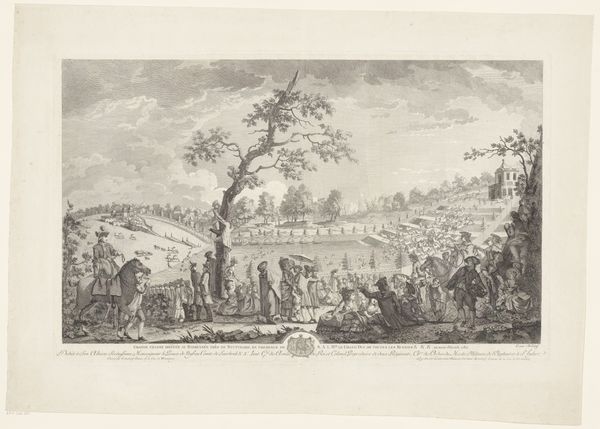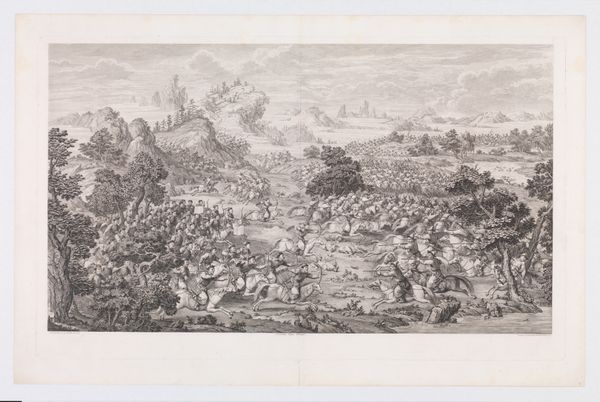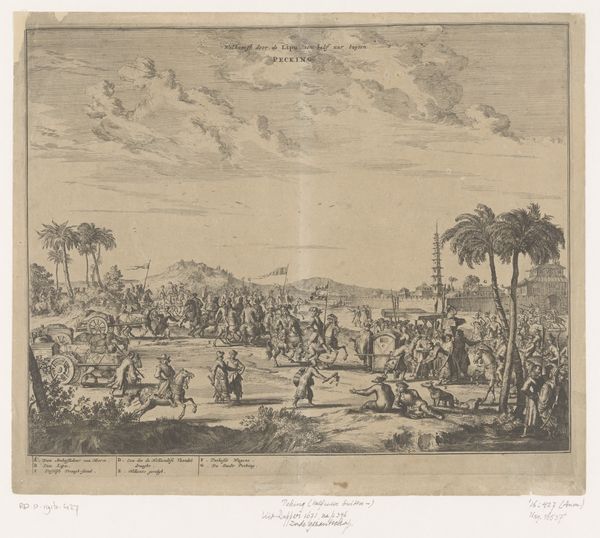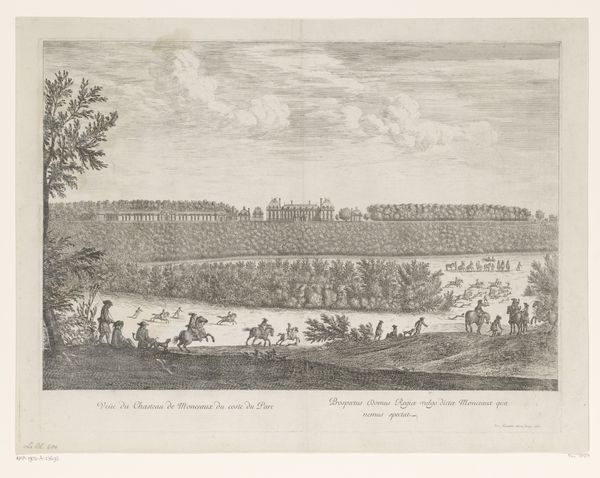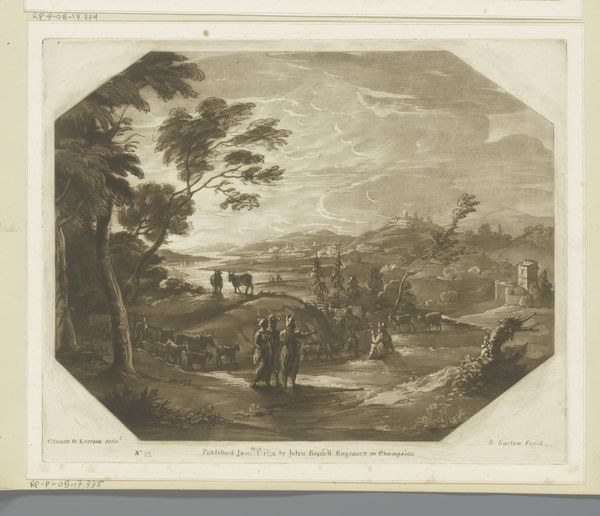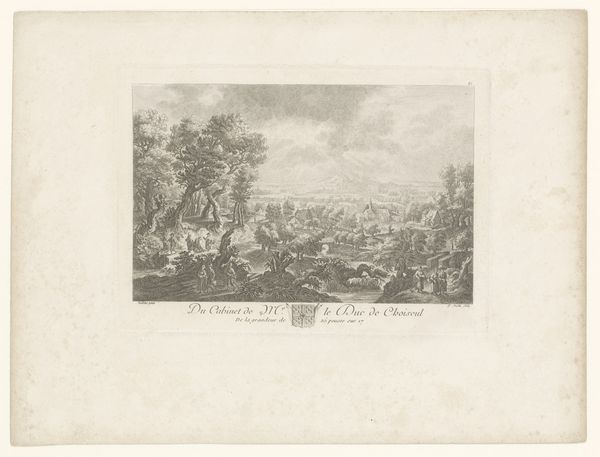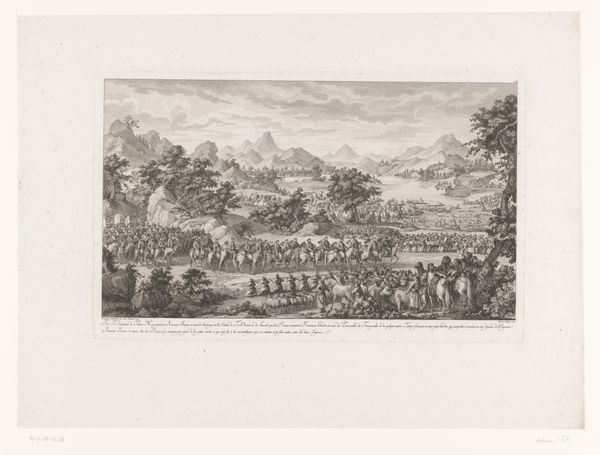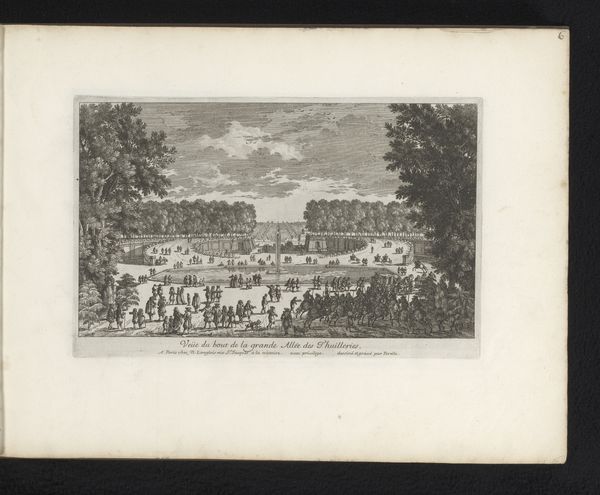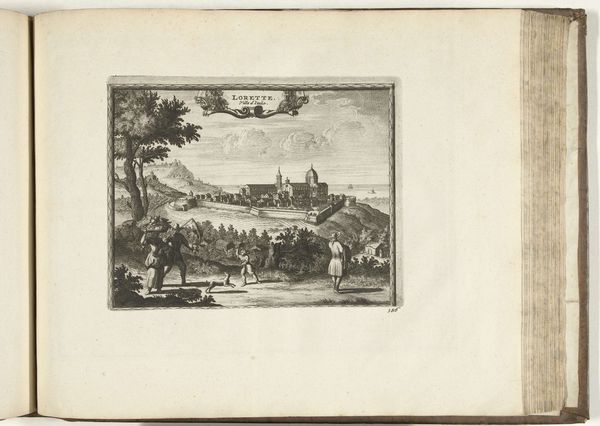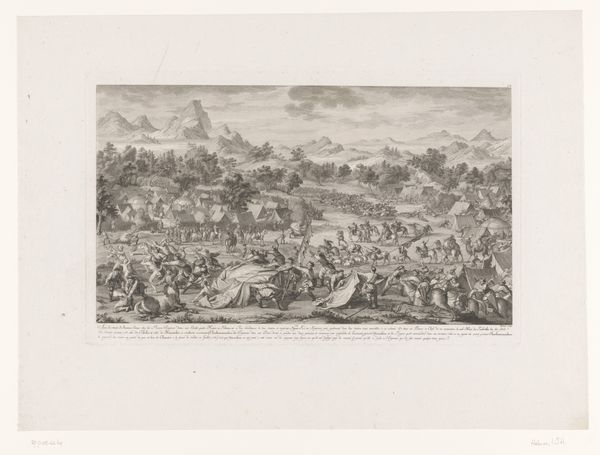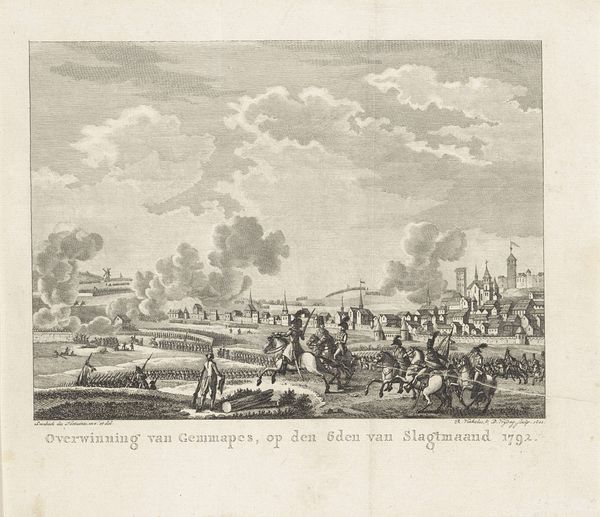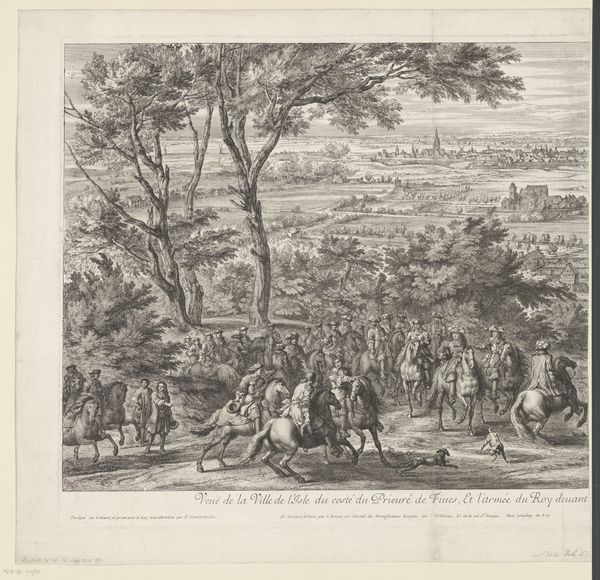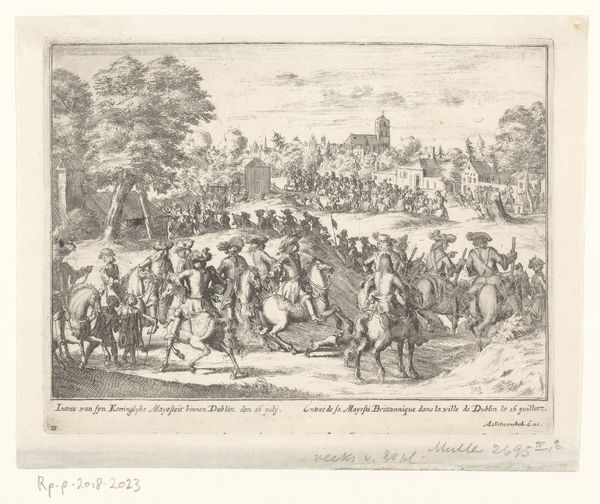
print, etching
#
baroque
# print
#
etching
#
landscape
#
etching
#
genre-painting
#
history-painting
Dimensions: height 276 mm, width 549 mm
Copyright: Rijks Museum: Open Domain
Curator: Here we have Pieter Jan van Cuyck’s etching, "Kampement bij Den Haag, 1742," dating from after 1742. What are your first thoughts on viewing this landscape? Editor: The composition is very busy. There's a kind of structured chaos that's interesting. I'm drawn to how the light and shadow play across the scene, creating depth and directing the eye. It gives an illusion of distance, despite being a rather flat, linear work. Curator: Absolutely. What we're seeing is a genre scene set within a carefully constructed historical context. It depicts a military encampment near The Hague, providing a glimpse into the social life surrounding the Dutch military at the time. The print would have been accessible to a wide audience. Editor: I agree. Looking closer at the lines, there’s a conscious effort to create a sense of volume and texture, especially with the trees to the left. It adds another dimension, and complicates a sense of immediacy to the historical content. Curator: Yes, Cuyck utilizes the print medium to distribute images of national importance. These images were critical in shaping and maintaining public perceptions of power and security in the Netherlands. How fascinating is that? Editor: I see the details more vividly now. There are several groups of people engaging in their own little scenes. See the figures in the lower right, struggling or playing? They’re so animated. The composition is dynamic with the deliberate arrangement and contrast in each element of the landscape. Curator: Consider how prints functioned in disseminating political and cultural ideologies. Cuyck gives us this lively snapshot of military culture intertwined with daily life. It shows how integral the military was to the identity of the Dutch Republic. Editor: It is true—each etching signifies particular importance given their scale, detail, and subject matter. After some consideration, my eye lingers more on the formal aspects, the artist’s control of line, composition, and texture in constructing a world with symbolic dimensions. Curator: It’s fascinating to see how Cuyck’s depiction encapsulates a particular moment in Dutch history, inviting reflection on its society and governance. Editor: Agreed. Focusing on the internal logic and arrangement allows a deeper appreciation of its structure and how it evokes these historical sentiments.
Comments
No comments
Be the first to comment and join the conversation on the ultimate creative platform.
